Less than 10 minutes later, shots rang out. Secret Service agents quickly ushered Trump, who had been grazed by a bullet, off the stage. By the end of the rally, the number of Washington Post journalists covering the event had grown to between 200 and 250.
Covering the attempted assassination of a former US president running for re-election was a monumental event. Hundreds of journalists, perhaps more, had been working around the clock since July 13, meticulously confirming the details of the assassination amid widespread rumors and conspiracy theories on social media.
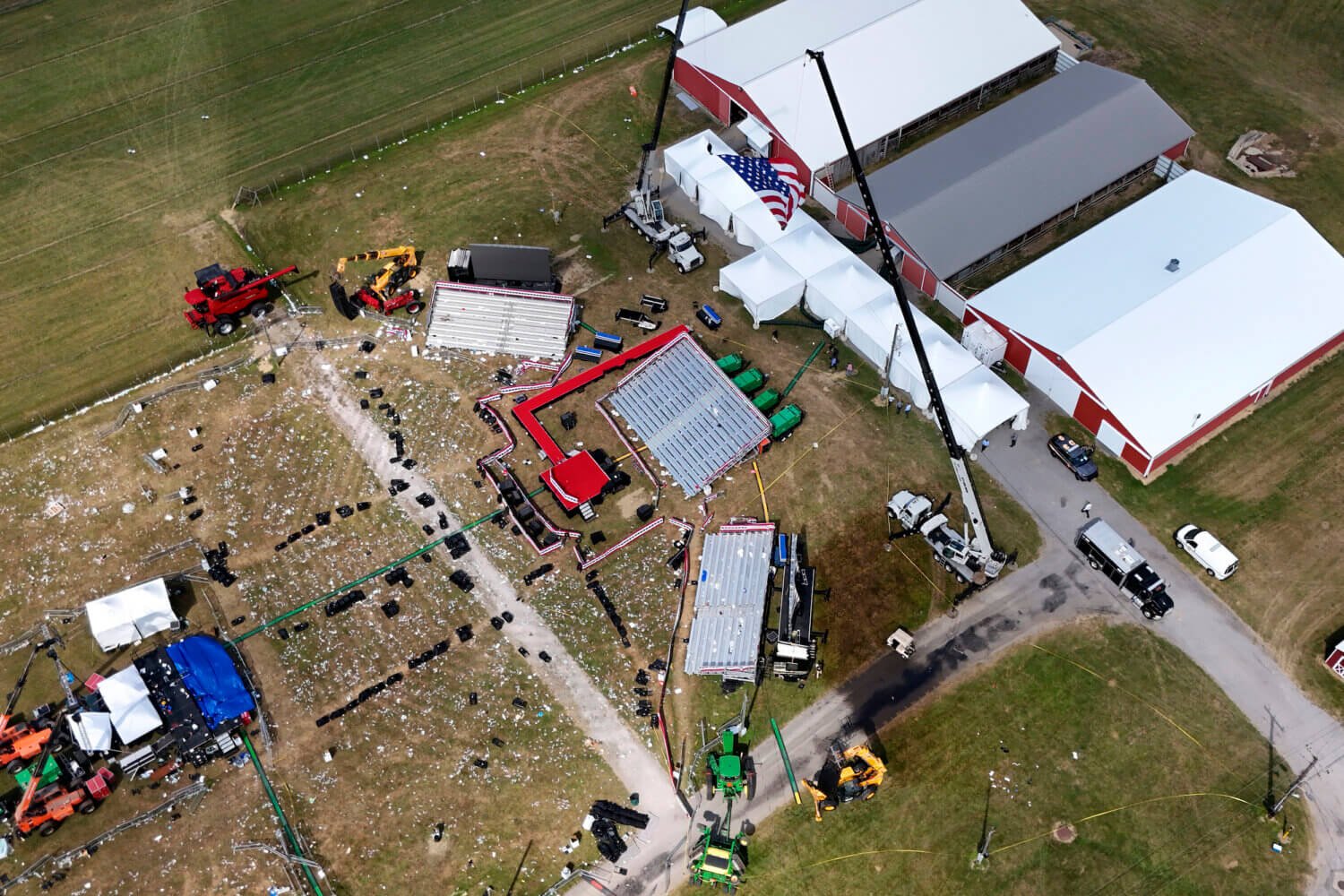
The location of the attempted assassination of Donald Trump. Photo: AP
Delivering the news correctly rather than quickly
Reporters first had to determine the source of the noises before the Secret Service escorted Mr. Trump off the stage. Washington Post deputy editor Mark W. Smith said information was limited to what journalists could see.
At the time, all they saw was Mr. Trump touching his ear before Secret Service agents escorted him off the stage. They have yet to confirm that the noises were gunshots, and while they could see Mr. Trump's right ear bleeding, they have yet to determine exactly what caused it.
Smith said reporters would not report the story without official verification of the incident from officials or Trump himself and his campaign. "So, of course, it starts with exactly what we saw. And then we start to get into official confirmation," he said.
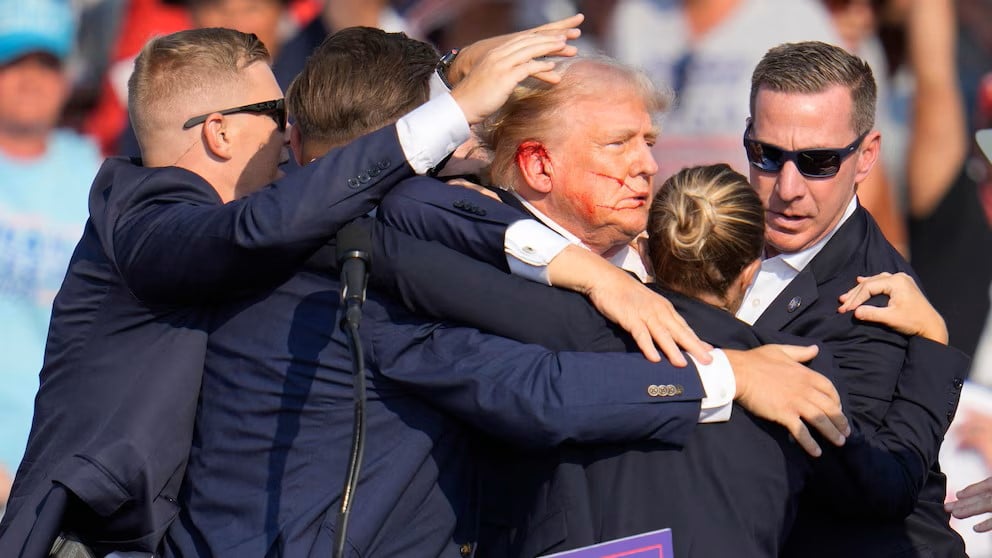
Former President Donald Trump was shielded by agents and placed in a car after being shot. Photo: ABC
Smith said the Washington Post was greatly assisted by national political correspondent Isaac Arnsdorf and photographer Jabin Botsford on the scene. They were able to speak directly with law enforcement on the scene, which helped the paper get the story out faster. Botsford also wore goggles with a camera, providing the Post with video footage from his perspective in addition to the images he captured with his camera.
The cautious media coverage has drawn criticism from the right, who accuse the media of downplaying the assassination. But when the media initially described the gunshots as “loud noises” or “bangs,” they were not trying to hide the event but rather avoiding speculation in the chaotic news situation.
“As a breaking news editor, I’ve always been of the mindset of ‘it’s better to be right than first,’ and sometimes it’s okay to take a step back,” said Molly Eichel, deputy editor for live reporting and breaking news at the Philadelphia Inquirer.
“It's okay to slow down a little bit, especially when we don't have the official sources... because if we're not right, we're not serving our readers.”
Geographical identification
New York Times photo investigative reporter Aric Toler said one of his top priorities when hearing about the shooting was to determine the geography of the scene. Compared to investigations he has done on events in other parts of the world , like Gaza, his job in this case, a fairgrounds in a small town in Pennsylvania, was relatively straightforward.
"There's super high-resolution satellite imagery, there's Google Street View, there's millions of cameras from people who attended the event. When someone says they saw a guy on a roof, it's not hard to figure out which roof he was on because there aren't that many roofs," Toler said.
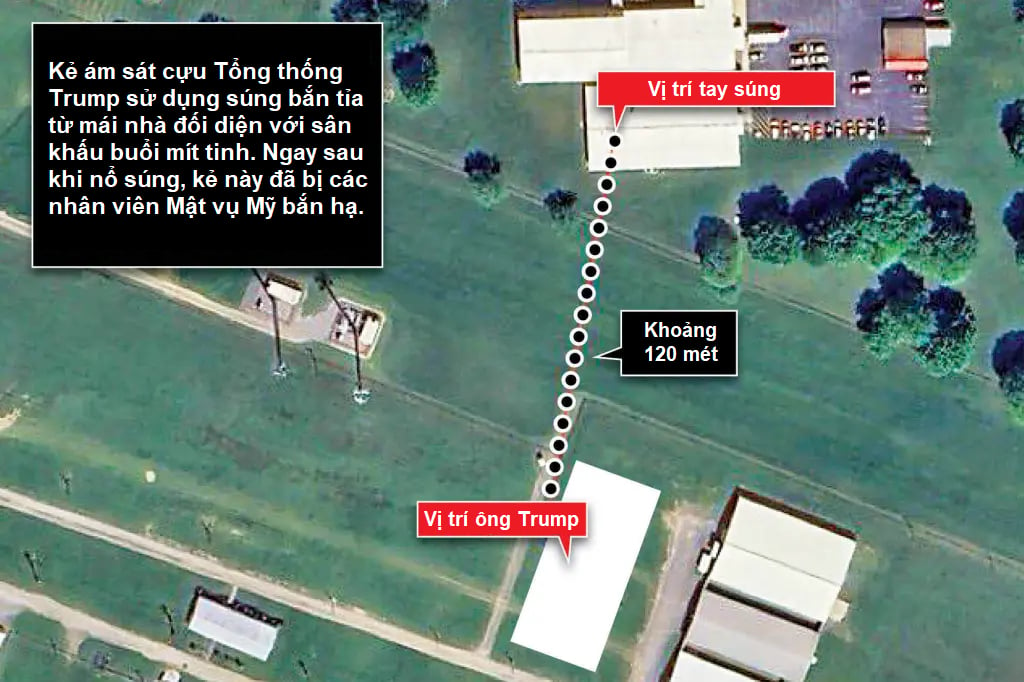
Graphic depicts the gunman standing about 120 meters from the stage when he assassinated Mr. Trump. Graphic photo: NYPost
The New York Times has assembled a visual timeline and video showing the assassination. To pinpoint the location of the assassin, journalists reviewed footage of his body on the roof of a building. They then identified the building and found it matched the likely location of the incident, based on Trump's position and his injuries.
NYT journalists also worked with an acoustics expert from Montana State University to analyze the sound of the gunshots, determining that the shots likely came from the same location as the suspect's body.
Identify the suspect
Following the attempted assassination, the focus of both the media and the public was on the identity of the shooter. The FBI identified 20-year-old Thomas Matthew Crooks as the shooter, although they are still working to determine his motive.
The New York Post was the first to report the shooter’s name, but it had previously misidentified the shooter. The Inquirer noted the information but did not report it again, citing the need for further verification, but they began looking into Crooks’ background.
Using LexisNexis, a database used by many journalists that contains public records and news archives, reporter Jeremy Roebuck compiled a report that included Crooks' address, his Republican Party registration, information about relatives, and other details.
Journalists around the world are doing the same. Intercept political reporter Prem Thakker posted screenshots from Pennsylvania’s voter services website and the Federal Election Commission’s public database of individual political donations, showing that Crooks is a registered Republican and donated $15 to ActBlue PAC, a political action committee that funds left-leaning and Democratic politicians in 2021.
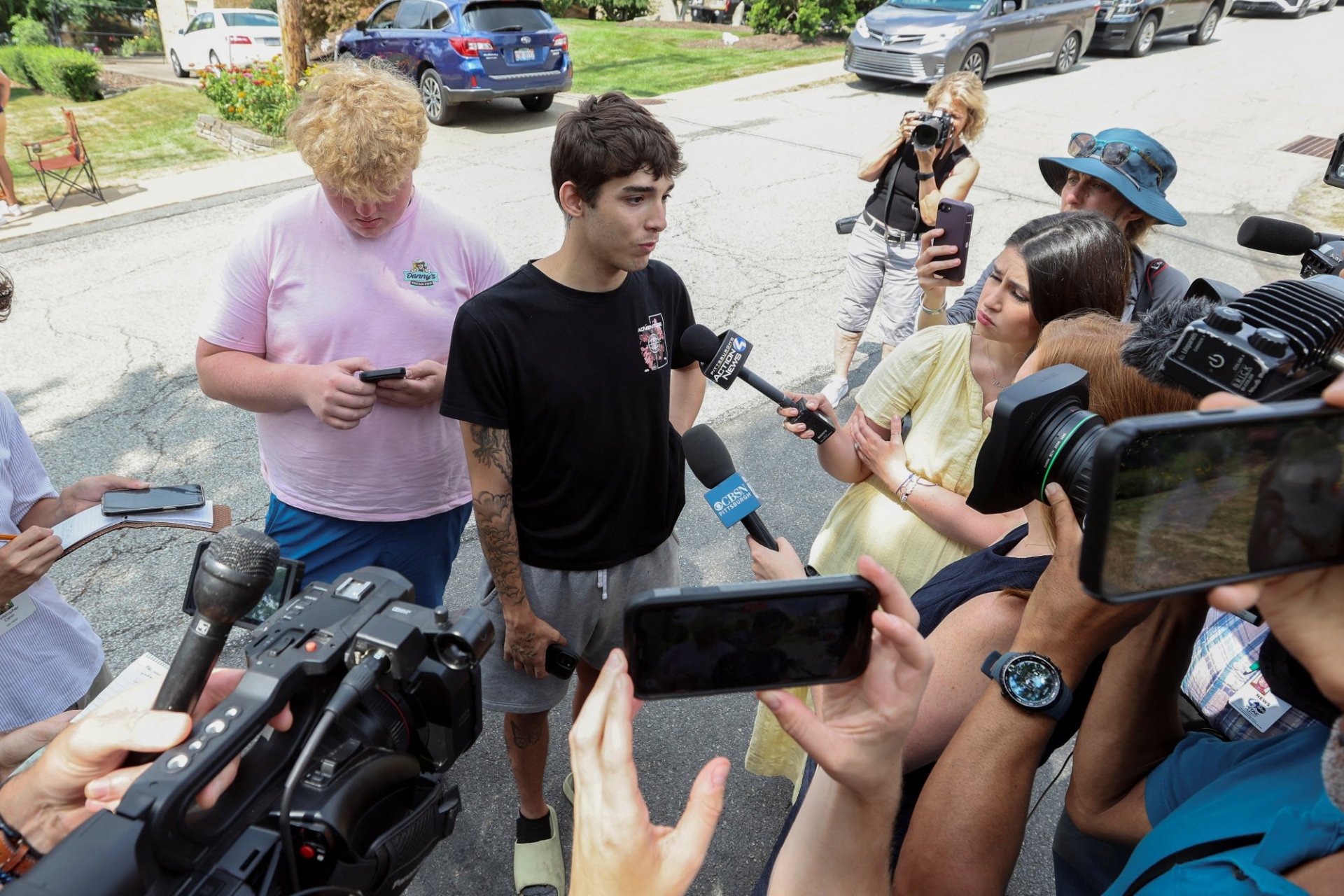
Jason Kolher, who attended school with Thomas Matthew Crooks, speaks to the media in Bethel Park, Pennsylvania on July 14. Photo: Reuters
Using the background material Roebuck compiled, Inquirer news researcher Ryan W. Briggs and breaking news reporter Max Marin compiled a list of people who might have known Crooks, including family, neighbors, and high school classmates, and began making calls. They chose to work by phone rather than in person because they understood that the media would likely flock to the suspect's home. The Inquirer's story on Crooks included interviews with high school classmates.
However, much remains unknown about Crooks' motives and the circumstances surrounding the assassination. For example, many are questioning the slow response of the Secret Service and how a suspect like Crooks could have gotten so close to Trump, let alone shot him.
Hoai Phuong (according to Poynter)
Source: https://www.congluan.vn/cac-phong-vien-da-ghep-noi-cac-chi-tiet-vu-am-sat-ong-trump-nhu-the-nao-post303761.html



![[Photo] General Secretary To Lam attends the 8th Congress of the Central Public Security Party Committee](https://vphoto.vietnam.vn/thumb/1200x675/vietnam/resource/IMAGE/2025/10/4/79fadf490f674dc483794f2d955f6045)


![[Infographic] Notable numbers after 3 months of "reorganizing the country"](https://vphoto.vietnam.vn/thumb/1200x675/vietnam/resource/IMAGE/2025/10/4/ce8bb72c722348e09e942d04f0dd9729)

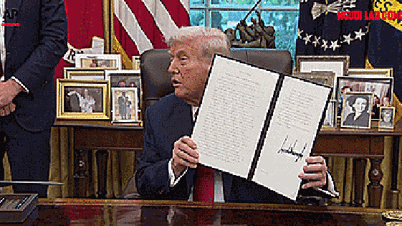




























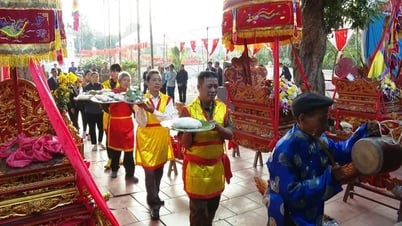
![[Photo] Prime Minister Pham Minh Chinh chairs meeting to deploy overcoming consequences of storm No. 10](https://vphoto.vietnam.vn/thumb/1200x675/vietnam/resource/IMAGE/2025/10/3/544f420dcc844463898fcbef46247d16)
![[Photo] Students of Binh Minh Primary School enjoy the full moon festival, receiving the joys of childhood](https://vphoto.vietnam.vn/thumb/1200x675/vietnam/resource/IMAGE/2025/10/3/8cf8abef22fe4471be400a818912cb85)





































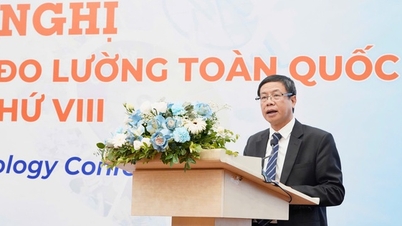

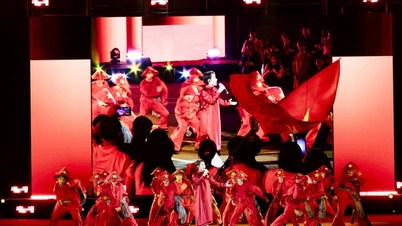


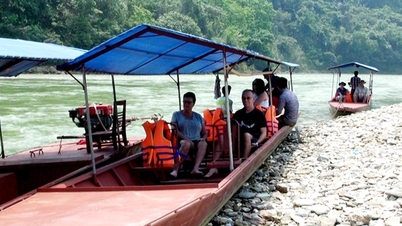


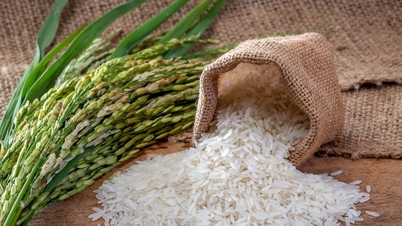

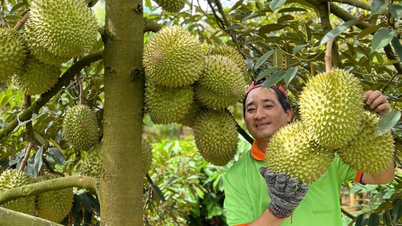
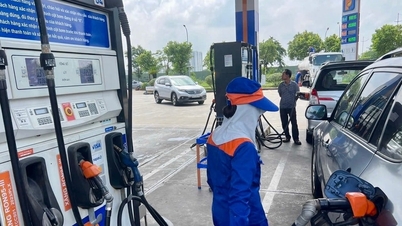
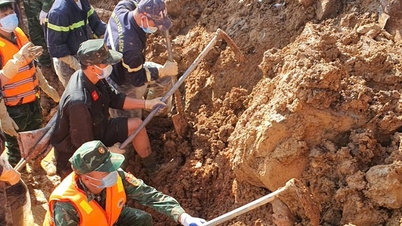

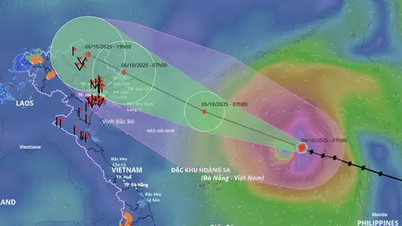

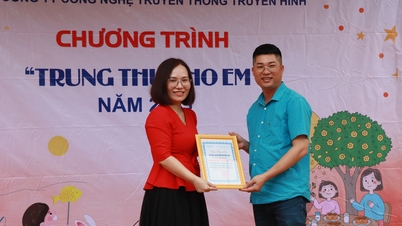














Comment (0)